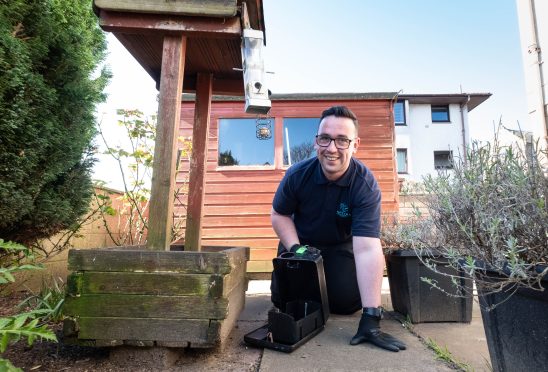A wildlife charity fears human intruders may have scared off ospreys at Scotland’s most famous nest.
Watchers around the world have followed the daily adventures of Laddie and a new female at the Loch of Lowes reserve, near Dunkeld, via a webcam.
Bosses say they are shocked to see the nest, which has been used by breeding ospreys for nearly 30 years, suddenly empty.
The Scottish Wildlife Trust, which runs the site, say the pair’s disappearance may be down to a number of factors such as strong winds, or that the new arrival simply did o’t like the nest.
However, assistant manager Emma Castle-Smith said the birds (known as LM12 and NC0) may have been disturbed by people, including one visitor who came so close to the nest the webcam microphone picked up their cough.
She said: “Our nest has been in constant use each year since 1991 so it’s been a bit of a shock for us to see them abandon such a cosy and well-maintained site.”
Last month, The Courier revealed a person in a kayak had entered the site during lockdown and “flushed” the birds from their nest for more than two hours.
Aside from coronavirus restrictions, the reserve is closed off to the public each year during breeding season.
Ms Castle-Smith said: “Sadly, and for unknown reasons, from April 11 onwards the number of sightings of LM12 and NC0 on the nest has been greatly reduced.
“We’re not sure why this has happened but there have been people close enough to the nest for a cough to be heard by the microphone, and this disturbance could have spooked the birds.”
She said: “We do know that the birds are still in the area. They are still defending the nest and they can occasionally be seen flying past or talon washing in the loch.
“Unfortunately, in the current lockdown, our ability to establish the bigger picture on the reserve is very limited. We know it must be very disappointing for viewers not being able to see the ospreys progress through this season.”
Ms Castle-Smith added: “But nature will do what nature does best, survive and thrive without people. We’re very hopeful that wherever our ospreys are, they will be successful.”
After becoming extinct across Britain, the osprey population began to recover in the 1960s. There are now an estimated 300 pairs that breed in the UK each summer.










